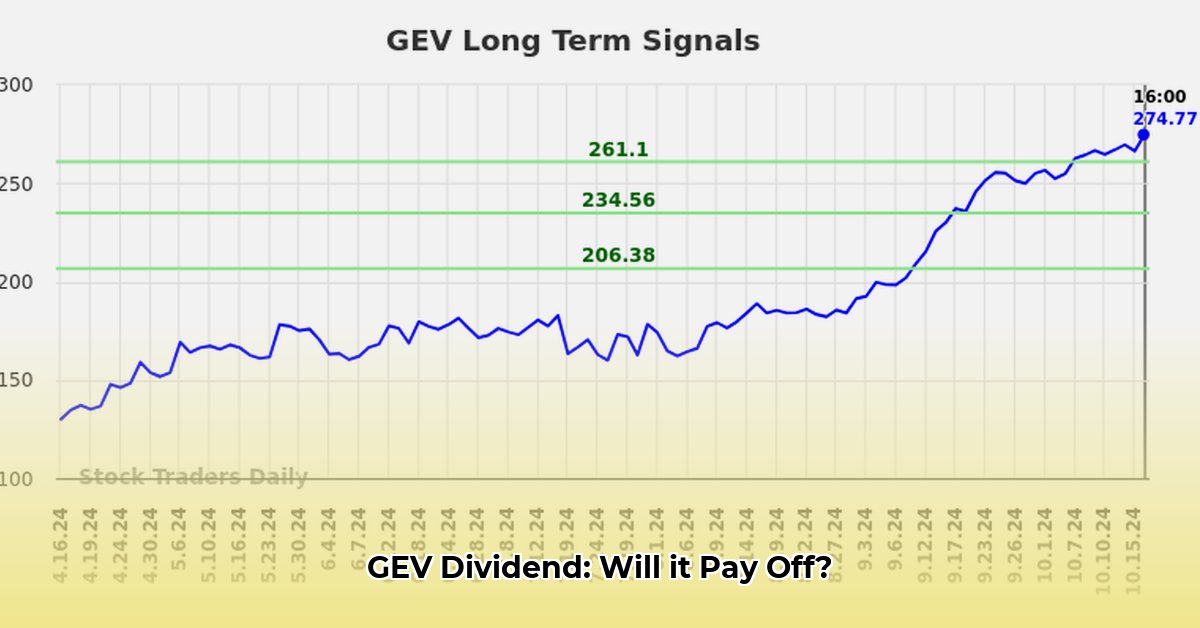
Understanding GE Vernova's Dividend Strategy
GE Vernova, the newly independent energy company spun off from General Electric, presents a unique investment proposition, particularly concerning its dividend policy. Currently, the dividend yield is low, approximately 0.07%. This seemingly modest payout reflects a strategic choice by management to prioritize reinvestment in growth over immediate shareholder returns. The company is aggressively pursuing expansion within the renewable energy sector, a market anticipated to experience significant expansion in the coming years. This approach mirrors a common strategy among high-growth companies: prioritizing capital expenditures for future expansion rather than distributing significant portions of earnings as dividends. Is this a wise long-term strategy? Only time will tell.
The Current Economic Landscape and its Impact on GEV
GE Vernova's performance, like that of many companies, is intertwined with broader economic conditions. Persistent inflationary pressures and overall market uncertainty create a challenging environment for all investments. While some analysts suggest that similar technology companies might be undervalued, the current market sentiment is cautious. This overall market mood combined with GE Vernova's low dividend yield creates a complex investment decision. Does this low yield accurately reflect GE Vernova's potential, or are there other factors at play?
Navigating the Risks: A Comprehensive Assessment
Investing in GE Vernova, like any investment, carries inherent risks. The following risk assessment matrix provides a clearer picture:
| Risk Factor | Likelihood | Impact | Mitigation Strategies |
|---|---|---|---|
| Market Volatility | High | High | Diversify investments across asset classes; consider hedging strategies. |
| Low Dividend Yield | High | Moderate | Supplement with higher-yielding stocks; focus on long-term growth potential. |
| Regulatory Changes | Moderate | Moderate | Stay informed about evolving regulations in the renewable energy sector. |
| Intense Competition | Moderate | Moderate | Analyze GE Vernova's competitive advantages and market positioning. |
Actionable Insights for Investors and Management
GE Vernova's current dividend strategy necessitates different approaches for various stakeholders.
1. Individual Investors (Short-Term Focus): Exercise caution. GE Vernova may not be suitable if you require immediate income. Diversify your portfolio to mitigate risk.
2. Individual Investors (Long-Term Focus): Thoroughly research GE Vernova's long-term growth strategy and the renewable energy market's outlook. This is a long-term investment requiring patience.
3. Institutional Investors: Conduct in-depth due diligence, analyzing GE Vernova's financial statements, competitive landscape, and long-term growth potential. Consider the broader economic climate and its effect on the renewable energy sector.
4. GE Vernova Management: Carefully balance reinvestment in growth with shareholder returns. Consider alternative strategies to enhance shareholder value while maintaining a strong growth trajectory. Transparent communication with investors is paramount. Do shareholders truly understand your long-term vision?
Mitigating Investment Risk in Renewable Energy Stocks
Investing in GE Vernova requires a careful assessment of its risk profile and the implementation of effective mitigation strategies. What are the key elements to consider?
Understanding GE Vernova's Dividend Policy
Analyzing GE Vernova's dividend yield and payout ratio is crucial. A low payout ratio might indicate high reinvestment, promising potentially higher future returns but lower immediate income. A thorough review of company financials reveals the current state of this balance.
Diversification and Portfolio Strategies
Diversification remains a key risk management strategy. Spread investments across different sectors and asset classes to reduce reliance on a single stock or industry. Regularly rebalance your portfolio to maintain your desired risk profile. How much of your portfolio should be allocated to renewable energy, and is GE Vernova appropriately weighted?
Thorough Due Diligence and Financial Analysis
Conduct a comprehensive analysis of GE Vernova's financial health, evaluating metrics like debt levels, profitability, and cash flow. Benchmark its performance against its competitors to better understand its financial standing.
Long-Term Perspective and Patient Investment
The renewable energy sector is characterized by long horizons. Investing in GE Vernova necessitates a long-term outlook, accepting short-term market fluctuations as part of the investment journey. Are you prepared for a long-term hold?
Active Monitoring and Adaptive Strategies
Regularly review GE Vernova's performance, market trends, and regulatory changes. Adjust your investment strategy based on new information, potentially adjusting asset allocation or exiting the position if risks escalate.
Seeking Professional Guidance
Consider seeking advice from a qualified financial advisor to create a personalized investment strategy aligned with your risk tolerance and financial goals.
Three Pivotal Points:
- GE Vernova's low current dividend reflects a strategic focus on reinvestment for future growth in the burgeoning renewable energy market.
- Broad economic factors and market uncertainty present considerable challenges and potential risks to the company’s success.
- A diversified portfolio, thorough due diligence, and a long-term perspective are crucial for mitigating investment risk in GE Vernova and the renewable energy sector.